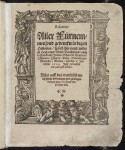 The first newspaper ever printed was created by bookseller Johann Carolus in Strasbourg, Holy Roman Empire, in the early 17th century. Carolus had produced a weekly current events newsletter before then, but he wrote it by hand and mailed it to a small number of moneyed subscribers. His source was the avise or avvisi, a summary of political news originally written by imperial postmasters on the routing slips accompanying dispatches and correspondence. Some newsletter writers also had their own sources with access to the latest goings-on in political circles. Carolus and other newsletter producers took one or more of the avvisi and copied them out or made their own compilation of them for their subscribers. It was expensive and the audience was limited to the elites who could afford the service.
The first newspaper ever printed was created by bookseller Johann Carolus in Strasbourg, Holy Roman Empire, in the early 17th century. Carolus had produced a weekly current events newsletter before then, but he wrote it by hand and mailed it to a small number of moneyed subscribers. His source was the avise or avvisi, a summary of political news originally written by imperial postmasters on the routing slips accompanying dispatches and correspondence. Some newsletter writers also had their own sources with access to the latest goings-on in political circles. Carolus and other newsletter producers took one or more of the avvisi and copied them out or made their own compilation of them for their subscribers. It was expensive and the audience was limited to the elites who could afford the service.
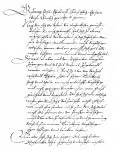 In 1604 Carolus bought a print shop and it soon dawned on him that he could sell far more newsletters if he didn’t have to handwrite every copy. The first issue of the Relation aller Fürnemmen un gedenckwürdigen Historien (Collection of all distinguished and commemorable news) was printed in September of 1605. He realized he was onto something and in December of that same year he petitioned the Strasbourg City Council that he be granted the exclusive privilege of being the sole publisher of weekly printed news. His petition was declined, but it’s a good thing he engaged the bureaucracy because that petition is the only surviving evidence that Carolus was printing his newspaper in 1605. The earliest known surviving issues of the Relation are from 1609.
In 1604 Carolus bought a print shop and it soon dawned on him that he could sell far more newsletters if he didn’t have to handwrite every copy. The first issue of the Relation aller Fürnemmen un gedenckwürdigen Historien (Collection of all distinguished and commemorable news) was printed in September of 1605. He realized he was onto something and in December of that same year he petitioned the Strasbourg City Council that he be granted the exclusive privilege of being the sole publisher of weekly printed news. His petition was declined, but it’s a good thing he engaged the bureaucracy because that petition is the only surviving evidence that Carolus was printing his newspaper in 1605. The earliest known surviving issues of the Relation are from 1609.
Carolus didn’t realize it at the time — this was purely a make-more-things-sell-more-things proposition for him — but the introduction of print made the news accessible for the first time to the vast majority of people who were not in the market for expensive manuscript newsletter subscriptions. The cheap overhead, mass-production and retail sales forever altered and democratized news distribution. His innovation was soon picked up by others and within 20 years, printed sheets with news of the day were distributed in cities large and small all over Europe.
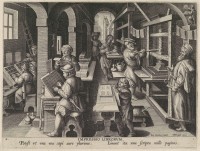 It took a while for a stable, profitable newspaper model to develop. Printers needed funding, political support, a reliable postal system and a network of sales outlets. Many papers quickly went under. Early newspapers were just a few pages, or even one page, long and had small print runs of a few hundred copies at most. They are therefore very rare survivals, and when they do survive, often it’s just a single copy of a single issue. You aren’t going to find these in newspaper archives or on microfiche somewhere. The early newspapers that have survived usually made it through the centuries because someone included them in a letter, diplomatic dispatch or manuscript. That’s why there may be only one copy of them. Some of them have been found folded inside Sammelbände, anthologies of different works printed at different times that were later bound together in a single volume.
It took a while for a stable, profitable newspaper model to develop. Printers needed funding, political support, a reliable postal system and a network of sales outlets. Many papers quickly went under. Early newspapers were just a few pages, or even one page, long and had small print runs of a few hundred copies at most. They are therefore very rare survivals, and when they do survive, often it’s just a single copy of a single issue. You aren’t going to find these in newspaper archives or on microfiche somewhere. The early newspapers that have survived usually made it through the centuries because someone included them in a letter, diplomatic dispatch or manuscript. That’s why there may be only one copy of them. Some of them have been found folded inside Sammelbände, anthologies of different works printed at different times that were later bound together in a single volume.
With no known surviving copies and no references in other sources, on occasion entire early newspapers have simply disappeared from the historical record. One of these was recently rediscovered by Dutch book historian Arthur der Weduwen. While working on compiling the first complete bibliography of all 17th century Dutch and Flemish newspapers, he spotted a catalogue entry for an issue of the Nieuwe courante uyt Italien, Duytslandt ende Nederlant (New paper from Italy, Germany and The Netherlands), published by Adriaen Leenaertsz in Utrecht in 1623. Historians have long believed that the first newspaper in Utrecht was the Mercurius published in 1658 by Gerard Lodewijk van der Macht, a The Hague newspaper publisher and all-around gadfly who only settled in Utrecht after he was exiled from Holland for 10 years for allegedly fabricating news stories. Weduwen’s discovery advances the date of the first paper in Utrecht by more than three decades.
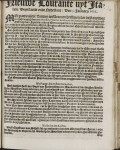 The issue of the Nieuwe courante is part of a Sammelbände held by the City Archives and Athenaeum Library in Deventer, the oldest city library in the Netherlands. There are 25 assorted pamphlets — political dialogues, court sentences, etc. — dated from 1611 to 1672 in the anthology. The Nieuwe courante is the only early newspaper among them. The issue is dated January 5th, 1623, and contains a dozen news reports on four pages. There are stories from Rome, Prague, Berlin, Regensburg, two from Leipzig, Heidelberg, Frankfurt, Breeslinghen (likely Brietlingen in Germany), Cologne, Arnhem and Amsterdam, arranged chronologically, each report titled with the city it came from and the date of the news.
The issue of the Nieuwe courante is part of a Sammelbände held by the City Archives and Athenaeum Library in Deventer, the oldest city library in the Netherlands. There are 25 assorted pamphlets — political dialogues, court sentences, etc. — dated from 1611 to 1672 in the anthology. The Nieuwe courante is the only early newspaper among them. The issue is dated January 5th, 1623, and contains a dozen news reports on four pages. There are stories from Rome, Prague, Berlin, Regensburg, two from Leipzig, Heidelberg, Frankfurt, Breeslinghen (likely Brietlingen in Germany), Cologne, Arnhem and Amsterdam, arranged chronologically, each report titled with the city it came from and the date of the news.
Those dates, incidentally, are notably old for a newspaper. Prague, dated to December 1st, 1622, is the oldest at more than a month old before publication. That wasn’t unusual for small town presses. The big city papers had the resources to ensure their news was well and truly breaking, even when it came from relatively distant places, and their market put a premium on timeliness since news had a great impact on the stock market and financial decisions. In the provincial market, newspapers were more about keeping abreast of the issues for conversation and intellectual stimulation.
The newspaper was valued for its curiosities and for its accounts of foreign affairs, which did not necessarily decline in interest several weeks after their occurrence. In this respect the issue of the Nieuwe courante of 5 January 1623 could offer an impressive panorama of European affairs. The report from Rome included news of the papal pardon of the Archbishop of Spoleto; of an alliance between France, Venice, Savoy and Swiss Cantons in the Valtellina; of attacks by Turkish troops on Venetian merchants in Smyrna; and of the arrival in Genoa of a ship from Barcelona laden with gold. From Prague came news of the publication of an imperial mandate in Liechtenstein against Calvinist preachers; a report from Berlin carried word of the reinstatement of Christian of Anhalt by the Emperor; and the reports from Leipzig detailed the progress of the Elector of Saxony. Other reports continued the relation of affairs from the crises in the Holy Roman Empire; of skirmishes near the border of the Dutch Republic; and of the general Protestant plight throughout Europe. This was information of great relevance to the early modern Dutch reader in the 1620s: it strengthened their grasp of geography and expanded their worldview; it affirmed their presumptions of the international order and the righteousness of the Protestant cause. This January issue of the Nieuwe courante neatly encapsulates the purpose and use of the newspaper in the seventeenth century.
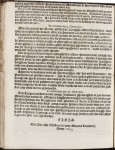 Since this is the only issue ever found, we don’t know how long the Nieuwe courante was in circulation. Probably not very long at all. Adriaen Leenaertsz published several pamphlets — there are 27 listed in two catalogues — between 1606 and 1623. They weren’t newspapers because they were single-topic pamphlets, but they were all about current events, making Leenaertsz a proper early newsman. The record stops after 1623, the year this issue of the Nieuwe courante was printed. It’s possible the expense and failure of the newspaper may have driven him out of publishing altogether.
Since this is the only issue ever found, we don’t know how long the Nieuwe courante was in circulation. Probably not very long at all. Adriaen Leenaertsz published several pamphlets — there are 27 listed in two catalogues — between 1606 and 1623. They weren’t newspapers because they were single-topic pamphlets, but they were all about current events, making Leenaertsz a proper early newsman. The record stops after 1623, the year this issue of the Nieuwe courante was printed. It’s possible the expense and failure of the newspaper may have driven him out of publishing altogether.
You can and should read Arthur der Weduwen’s excellent research article on the find published in the journal Quærendo here. It’s a fascinating look into the early decades of newspaper history where they first really took off.